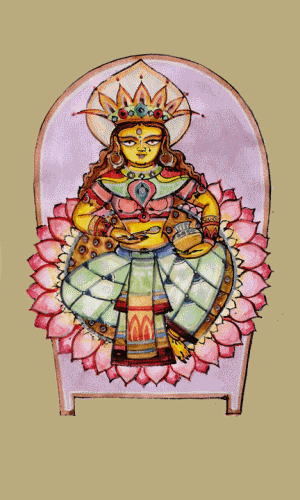 Who doesn’t love good and convenient cookware. In India utensils are a part of the wedding gifts and dowries that mothers collect for their daughters over years. When babies are born, silver tumblers, bowls and spoons are common gifts.
Who doesn’t love good and convenient cookware. In India utensils are a part of the wedding gifts and dowries that mothers collect for their daughters over years. When babies are born, silver tumblers, bowls and spoons are common gifts.Utensils even have a place in indian celebrations and festivals. During the Diwali (Hindu new year) festivities, there is a special day called “Dhanteras” when every Hindu family buys something in metal for the home. In most families it is a steel utensil that is offered to the gods before being used.
Utensils hold a place of pride in Indian kitchens and housewives proudly display their shining copper and steel vessels.
If asked to choose only three utensils indispensable for Indian cooking, I would select:
Pressure cooker
Mortar and pestle
Karahi (Indian wok)
Pressure cooker: Indians have generally remained faithful to old designs and materials for making daily fare. The only new utensil that has entered almost every Indian home is the pressure cooker. If you plan to cook lentils regularly, a pressure cooker is a must – not only is it a fast and failproof way of cooking but it is energy efficient so it is also the green way. I use pressure cookers regularly for cooking lentils, boiling potatoes, making stocks and soups, cooking curries - my list is endless.
Pressure cookers are generally made from aluminium or stainless steel. And are mostly unsuitable for dishwashers. Also due to their unique shape I recommend washing by hand.
A gasket or sealing ring forms a gas-tight seal which does not allow air or steam to escape between the pot and the lid; normally, the only way the steam can escape is through a regulator or a whistle.
I would suggest investing in a 3 litre capacity pressure cooker and if you are single and footloose then a 1 litre one will do just as well.
The food to be cooked is placed in the pressure cooker, with a small amount of water. The lid is closed, the pressure setting selected (or if a weight is used, the weight is placed on the steam vent) and the pressure cooker is placed on a heat source at the highest heat until the cooker reaches full pressure, then the heat is turned down and timing the recipe begins at this point.
The higher temperature causes the food to cook faster; cooking times can typically be reduced by about 70 percent. For example small to medium-sized potatoes cook in about eight minutes (depending on thickness and type), and a whole chicken takes only twenty minutes. Rice and lentils and beans can be cooked in ten minutes instead of 45. It is also believed that some food toxins can be reduced by pressure cooking.
Pressure cooking is often used to simulate the effects of long braising or simmering in shorter periods of time.
You can see from this writeup that I am a big fan of pressure cookers. “Go Green with pressure cookers!!”



0 comments:
Post a Comment